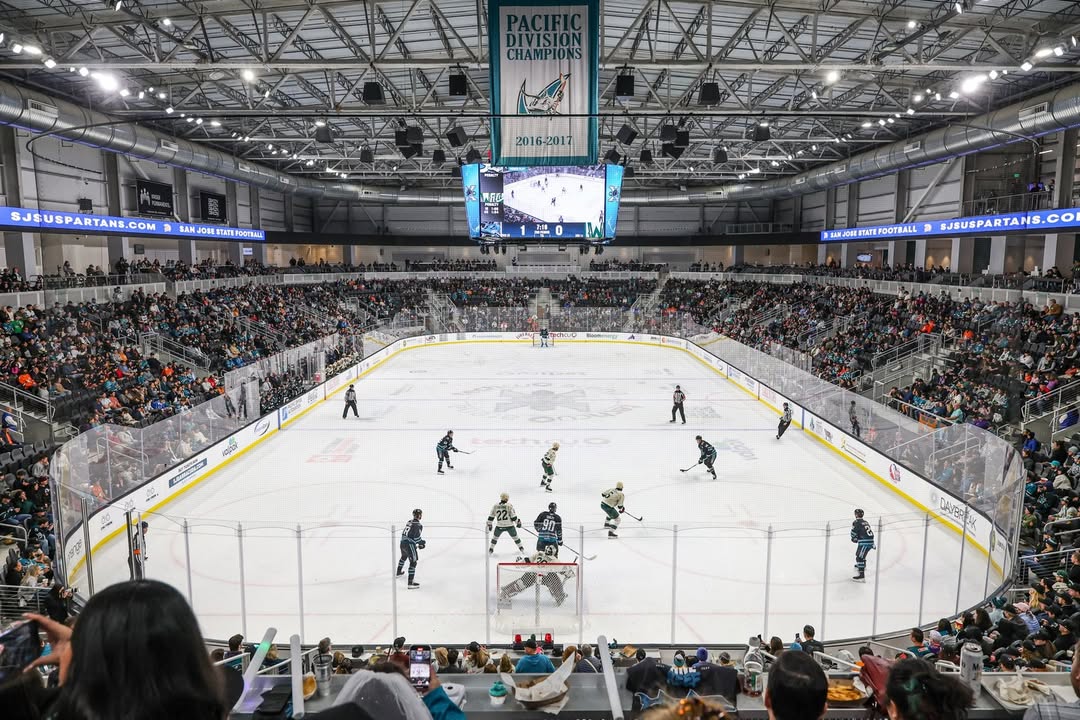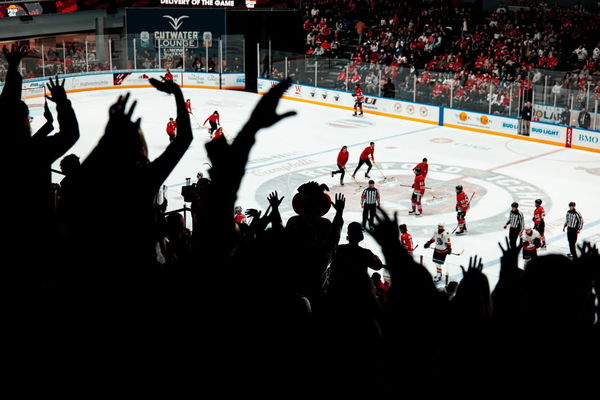
Imago
Credit: Instagram.com/@AHL

Imago
Credit: Instagram.com/@AHL
The long-running AHL vs NCAA debate has flared up once again. While experts have analyzed both paths for years, the perception that the AHL is the superior route still causes frustration in other leagues. WHL Commissioner Dan Near reignited the controversy with a pointed analogy—one that has sparked fresh debate. He shared his thoughts during a podcast appearance on July 16.
Watch What’s Trending Now!
In a recent interview on @TPS_Guy’s “The Pipeline Show,” WHL Commissioner Dan Near, while discussing developmental experiences, compared NCAA hockey to the American Hockey League. He said, “I know people who have flown coach their whole life and then had an opportunity to get upgraded, and they sat in business class. Do you know how hard it is to go back to coach once you’ve sat in business class?” His point was to highlight the significant difference in environments between the two leagues, while praising the work culture in the AHL.
He continued, “Well, the American Hockey League versus the NCAA environment—I’m not sure that playing a Friday-Saturday schedule and then pumping iron and drinking smoothies all week is necessarily the best segue into what the AHL grind is like.” Near was cautioning WHL players who might view the NCAA as a straightforward stepping stone to pro hockey. According to him, it would be a mistake to treat these leagues as equivalent. He suggested that transitioning from the NCAA to the American Hockey League could come as a rude awakening.
ADVERTISEMENT
In a recent interview on @TPS_Guy’s “The Pipeline Show” WHL commissioner Dan Near concedes that the NCAA is “business class” but cautions that “playing a Friday and Saturday schedule and then pumping iron and drinking smoothies all week” will make you soft and ill-prepared for… pic.twitter.com/Fb8r8A02w9
— Greater Alberta College Hockey (@BCHL_Alberta) July 16, 2025
He conceded that the NCAA is “business class,” but warned that “playing a Friday and Saturday schedule and then pumping iron and drinking smoothies all week” could leave players soft and under-prepared for the American Hockey League’s demands.
So, why did Dan Near take aim at the NCAA now? One likely reason is the recent structural shift in how young players choose their developmental paths to the NHL. Beginning in the 2025–26 season, CHL players will officially be eligible to compete in U.S. college hockey, following a significant NCAA rule change enacted late last year. The impact is already being felt—2024–25 CHL Player of the Year Gavin McKenna is leading the movement.
ADVERTISEMENT
On July 8, just weeks after guiding the Medicine Hat Tigers to the Memorial Cup Final, McKenna announced his commitment to Penn State, instantly becoming the face of this historic transition.
This high-profile move—and the broader trend it represents—may have sparked frustration from the WHL’s top official. McKenna is not alone: 26 players have recently chosen NCAA college hockey over the WHL. The NCAA offers a more holistic developmental experience, emphasizing education and long-term growth, while the American Hockey League focuses more directly on producing NHL-ready talent. The NCAA’s amateur status means players are not paid professionally, though many now benefit from NIL (Name, Image, and Likeness) deals to support themselves financially.
ADVERTISEMENT
Age also plays a role. The AHL often features older, more seasoned prospects on the cusp of the NHL, whereas NCAA players typically spend more time developing within a collegiate framework. Still, many NCAA alumni have gone on to achieve tremendous NHL success—including stars like Cale Makar, Zeev Buium, Brett Hull, and Chris Kreider.
How does the American Hockey League shape future stars?
Young hockey talents often begin their professional journey in the AHL. It is widely regarded as the NHL’s developmental ground. Rather than being driven purely by wins and losses, the league emphasizes growth and skill refinement. It serves as a vital stepping stone, offering players a chance to gain experience. The American Hockey League sharpens its game without the intense scrutiny and pressure of the NHL spotlight.
ADVERTISEMENT

Imago
Credit: Instagram.com/@AHL
In many ways, the AHL functions as a crucial bridge between potential and performance at the highest level. Raw physical talent isn’t enough. The players must think deeply about the game. AHL coaches develop hockey IQ by sharpening awareness, reading plays, improving anticipation, and enhancing positioning. It also helps in refining decision-making to prepare players for the NHL’s blistering pace and mental complexity.
Future captains are forged in the AHL. Young players are encouraged to lead by example, inspire their teammates, and carry themselves with maturity, skills that extend far beyond the rink. These are the strong points on which the American Hockey League sits perfectly, which can also inspire the NCAA.
ADVERTISEMENT
ADVERTISEMENT
ADVERTISEMENT
ADVERTISEMENT

